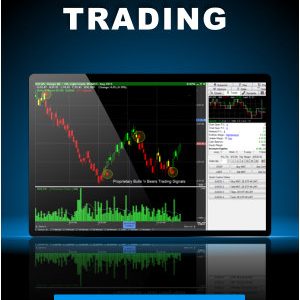U.S. stock indexes rose Thursday as traders refocused on the Ukraine war, which has driven up energy prices and threatened to hamper the global economy’s recent growth.
The S&P 500 was up 0.9% in afternoon trading, after the broad-market index closed more than 2% higher in each of the past two sessions. The tech-heavy Nasdaq Composite Index was up 0.9%. The Dow Jones Industrial Average rose 0.8%, or 267 points. All 11 of the S&P 500’s sectors were recently in the green.
Some of the biggest market moves were in oil, which has been highly volatile because the war stands to curtail Russia’s role as a major oil supplier. The U.S. crude benchmark added 7.6% Thursday to once again trade above $100 a barrel. Brent crude, the global benchmark, was also above $100. The S&P 500 energy sector was up roughly 2.9%.
Oil recently traded above $130 a barrel, versus roughly $90 before the war broke out. Traders have been trying to define a new range for oil prices during the war, according to
Jason Ware,
chief investment officer at Albion Financial Group. In recent days, stock traders have been taking the oil gyrations in greater stride, he said.
“Any time you get a jolt, it’s going to rattle equity markets and it’s going to take some time for stocks to discount this new environment,” Mr. Ware said.
Stocks have begun to stage a comeback in recent days after a punishing downdraft this year. Investors said they were focusing on the resumption of cease-fire talks between Ukraine and Russia but reports citing little progress weighed on sentiment.
“This shows that we’re not at the end of this conflict—that the commodity price situation is not going to improve—which makes it tougher for sentiment,” said
Esty Dwek,
chief investment officer at FlowBank.
Still, the S&P 500 has climbed more than 4% this week, on pace for its best week of 2022. Some investors say that beyond the war headlines, stock valuations now look more attractive, setting up the potential for gains ahead.
“It may stay volatile until Russia gets a little clearer, but underneath this is really good fundamentals,” said
Jim Paulsen,
chief investment strategist at the Leuthold Group.
Recent gains came as the Federal Reserve said it would lift interest rates for the first time since 2018 to combat inflation, which is running at a four-decade high. The central bank also penciled in six more rate increases this year.
Although the central bank’s stance has become more hawkish, it “wants to try to engineer a soft landing, and that’s actually quite a positive outcome for equities,” said
Adrian Zuercher,
the head of global asset allocation at UBS’s chief investment office.
Mr. Zuercher pointed to signs that the Fed was willing to tolerate inflation overshooting its 2% target—most officials now see core inflation ending the year at 4.1%—as indicating that policy makers were focused on not scuttling the economic recovery.

Japan’s Nikkei 225 surged nearly 3.5%.
Photo:
FABRIZIO BENSCH/REUTERS
The yield on the benchmark 10-year Treasury note moved down to 2.174% from 2.185% on Wednesday, reversing direction after three straight days of rises. Yields rise when prices fall. Selling of shorter-dated bonds, which are more heavily affected by changes in monetary policy, also eased with the two-year yield declining to 1.932% after climbing for eight trading sessions.
Weekly jobless claims in the U.S. came in at 214,000, a decrease from the previous week and in line with economists’ expectations. The proxy for layoffs has been hovering close to historically low levels amid the tight labor market.
Government bonds typically perform well in times of slower economic growth, which some investors now expect due to the Fed’s plans to tighten the economy. “There’s also an element of risk-off from the conflict,” said Ms. Dwek.
Traders said they still have concerns about longer-term energy supplies and that the shunning of Russian oil by shipping companies and banks is hitting the market now due to preplanned trades ahead of the invasion. The International Energy Agency said in a Wednesday report that sanctions on Russia could create a supply shock.
The Russian stock exchange remained closed and the ruble extended its decline, falling more than 6% against the dollar to trade at around 104 rubles to $1.
The price of gold, a traditional haven asset, climbed 1.8% to settle at $1,942.10 a troy ounce, breaking a four-session losing streak.
The pan-continental Stoxx Europe 600 closed 0.5% higher.
The Bank of England raised its key policy rate to 0.75% from 0.5%, marking its third straight hike in as many meetings. The central bank said that economic growth in Britain was likely to slow due to higher energy prices and softened its guidance for further monetary tightening, investors said.
Chinese shares rallied for a second day, with Hong Kong’s Hang Seng Index advancing more than 7% and the Shanghai Composite Index rising 1.4%.
China’s market will likely remain extremely volatile over the next few weeks, partly due to the war in Ukraine, as China relies on Russia for some commodity imports, said Mr. Zuercher at UBS.
Extended lockdowns could also reduce company earnings, if China cannot bring its Covid-19 outbreaks under control soon, he added. China has vowed to keep the economic costs of containing its recent Covid outbreak in check.
Key equity indexes in Australia and South Korea gained more than 1% in Thursday’s session, while Japan’s Nikkei 225 surged nearly 3.5%.
—Clarence Leong contributed to this article.
Write to Anna Hirtenstein at anna.hirtenstein@wsj.com and Ben Eisen at ben.eisen@wsj.com
Copyright ©2022 Dow Jones & Company, Inc. All Rights Reserved. 87990cbe856818d5eddac44c7b1cdeb8
Source link






